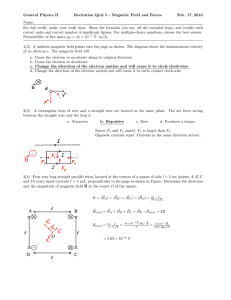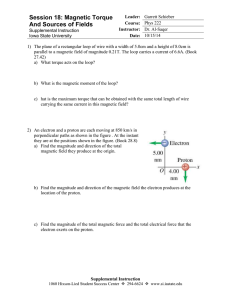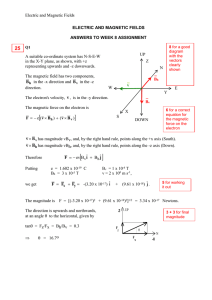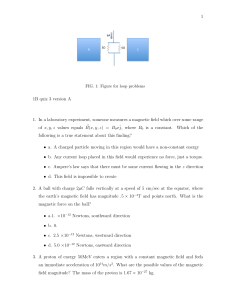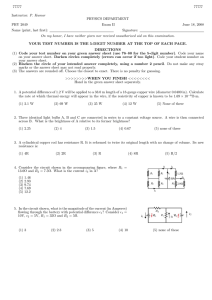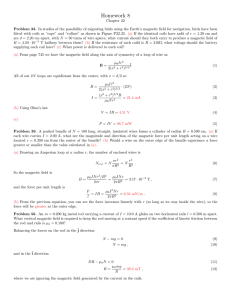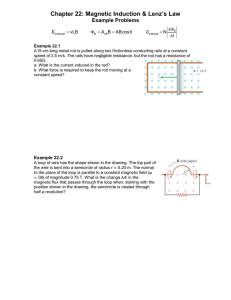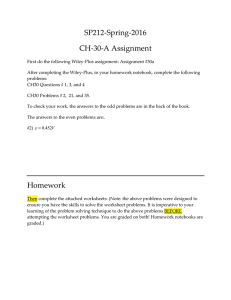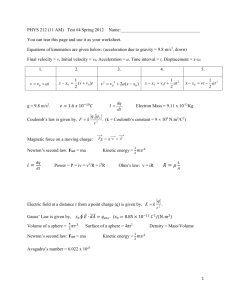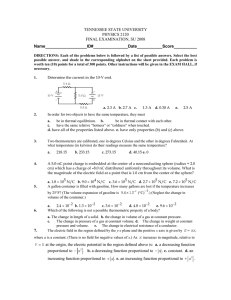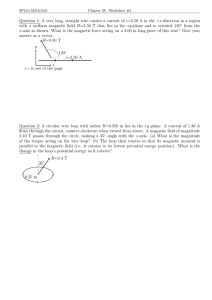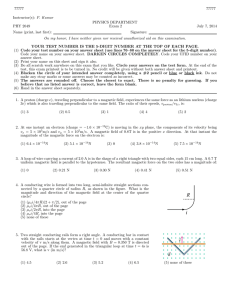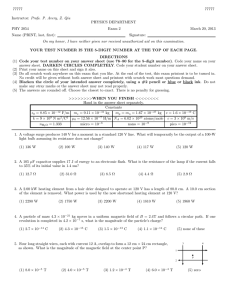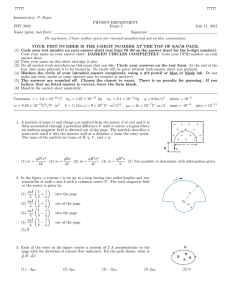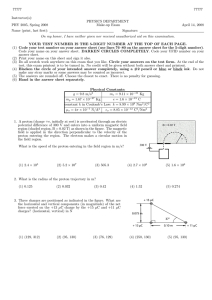PHYSICS 6B Ch.20 Worksheet electron traveling at a velocity of 3.58x10
advertisement
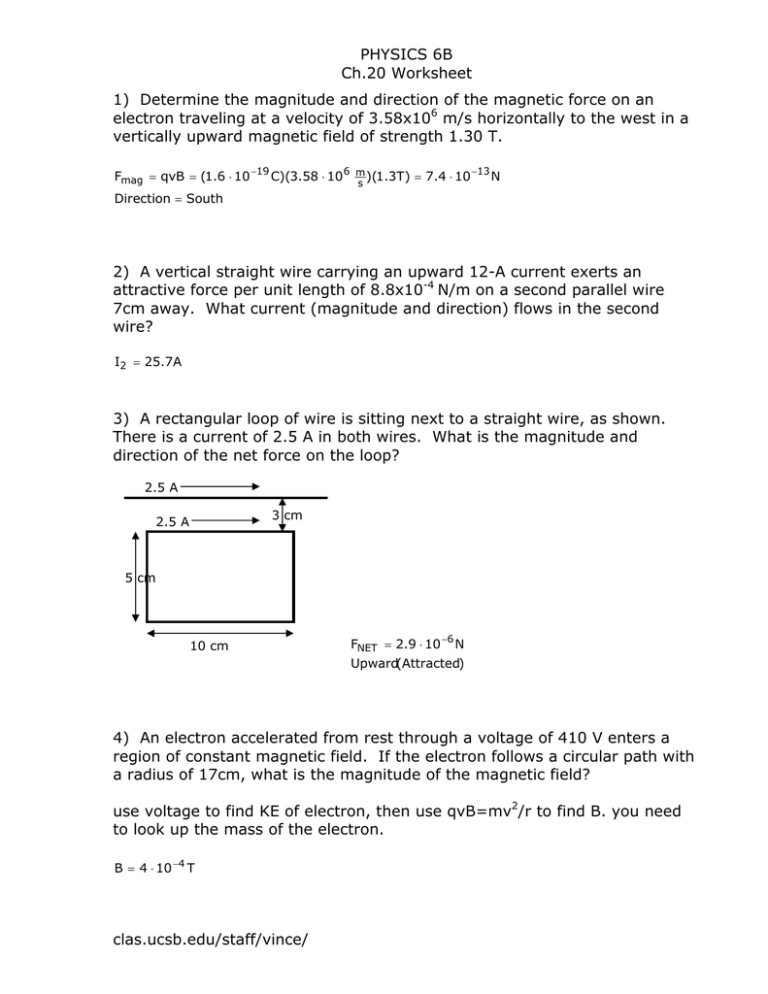
PHYSICS 6B Ch.20 Worksheet 1) Determine the magnitude and direction of the magnetic force on an electron traveling at a velocity of 3.58x106 m/s horizontally to the west in a vertically upward magnetic field of strength 1.30 T. Fmag = qvB = (1.6 ⋅ 10 −19 C)(3.58 ⋅ 10 6 m )(1.3T) = 7.4 ⋅ 10 −13 N s Direction = South 2) A vertical straight wire carrying an upward 12-A current exerts an attractive force per unit length of 8.8x10-4 N/m on a second parallel wire 7cm away. What current (magnitude and direction) flows in the second wire? I2 = 25.7A 3) A rectangular loop of wire is sitting next to a straight wire, as shown. There is a current of 2.5 A in both wires. What is the magnitude and direction of the net force on the loop? 2.5 A 3 cm 2.5 A 5 cm 10 cm FNET = 2.9 ⋅ 10 −6 N Upward(Attracted) 4) An electron accelerated from rest through a voltage of 410 V enters a region of constant magnetic field. If the electron follows a circular path with a radius of 17cm, what is the magnitude of the magnetic field? use voltage to find KE of electron, then use qvB=mv2/r to find B. you need to look up the mass of the electron. B = 4 ⋅ 10 −4 T clas.ucsb.edu/staff/vince/ PHYSICS 6B Ch.20 Worksheet 5) A single circular loop of radius 0.23m carries a current of 2.6A in a magnetic field of 0.95T. What is the maximum torque exerted on the loop? τ = IAB sin θ = (2.6A)(π ⋅ (0.23m)2 )(0.95T ) = 0.41N − m 6) In the previous problem, find the angle the plane of the loop must make with the field if the torque is to be half of its maximum value? we need sinθ = ½, so θ=30° 7) A metal rod of length 20cm and mass 100g is free to slide over two parallel, horizontal metallic rails connected to a 10V battery. The battery has internal resistance of 0.1Ω and the rails have negligible resistance. A 2-Tesla magnetic field is directed perpendicular to the plane of the circuit. a) Find the magnetic force on the rod. b) Find the rod’s speed after it has moved 30cm, assuming no friction. 10V a)F = 40N(Rightward) b)v = 15.5 m s Part a) of this problem is fine, but part b) is probably outside the scope of Physics 6B. The answer that I have provided ignores the effect of induction. The real answer would take into account the magnetic induction, which would tend to slow the rod down, so the actual answer is slightly less than 15.5. clas.ucsb.edu/staff/vince/

